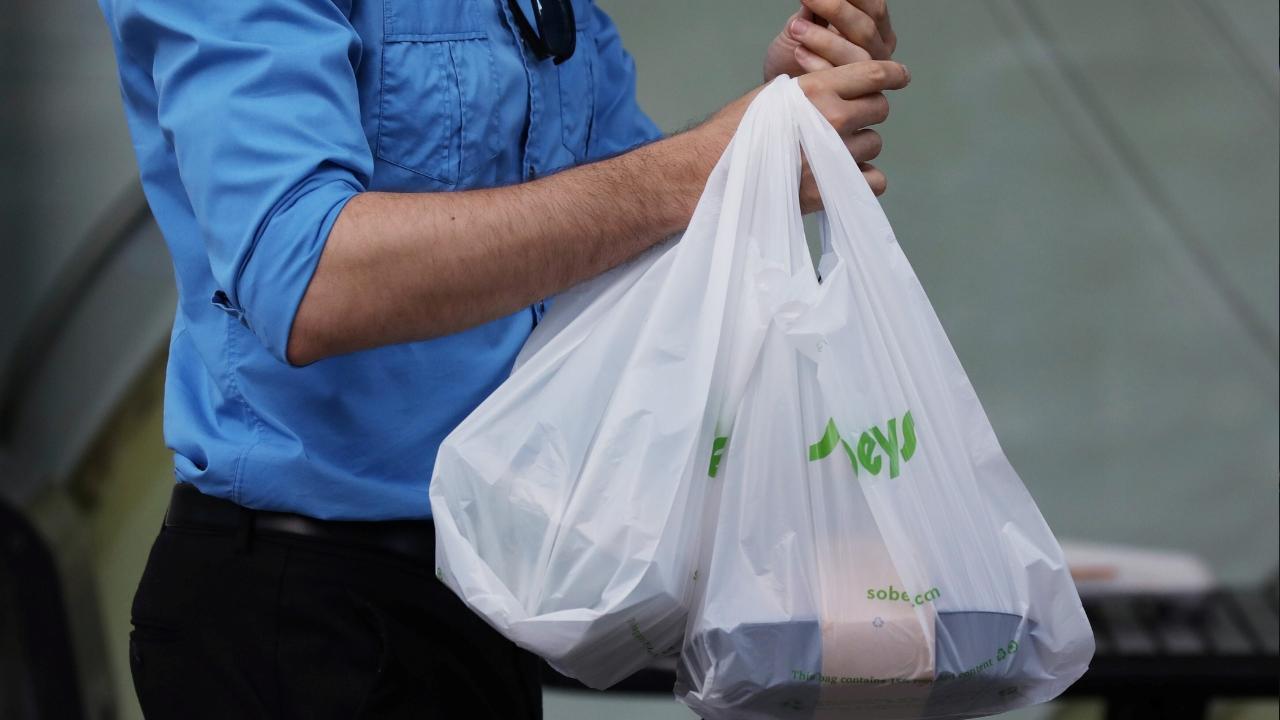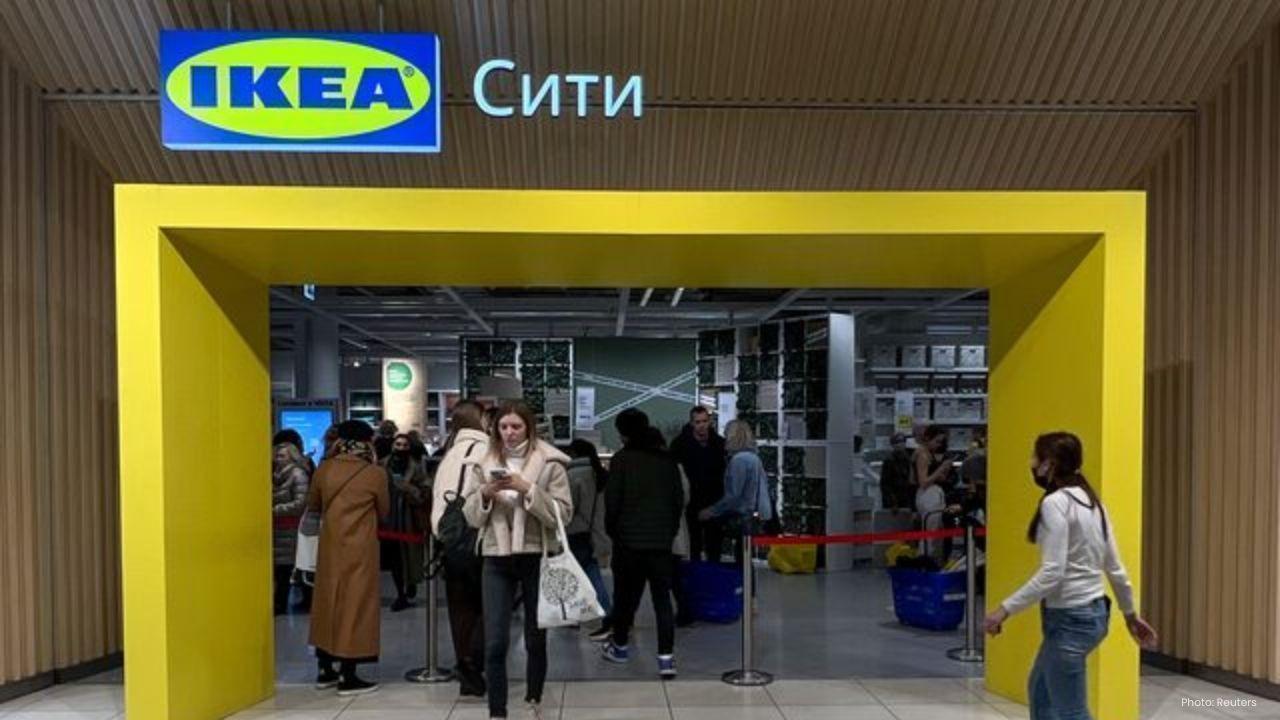
Post by : Raina Al-Fahim
Photo:Reuters
Across the world, shoppers are quietly leading a powerful change. More and more customers are refusing plastic packaging when they buy their everyday goods. From grocery stores to fashion outlets, people are asking for alternatives—paper, cloth, glass, or biodegradable options. What once seemed convenient—plastic bags and plastic wrapping—is now viewed by many as harmful, even dangerous, for both the planet and human health.
This shift in consumer behavior is reshaping industries, forcing businesses to rethink their packaging strategies, and pushing governments to speed up environmental rules. At its heart, this story is not just about shopping bags or food containers. It is about growing public awareness, collective responsibility, and a vision for a greener planet.
The Long Shadow of Plastic
To understand why shoppers are now rejecting plastic packaging, we must first look at how deeply plastic has shaped modern life.
Plastic, once celebrated as a miracle material, has become an environmental burden. Every year, the world produces more than 400 million tonnes of plastic. Almost half of this is for single-use items—bags, bottles, straws, wrappers, and containers—that are often thrown away after a few minutes of use. The shocking truth is that more than 8 million tonnes of plastic enter the oceans every year, choking marine life and polluting water sources.
Scientists have found plastic particles in fish, drinking water, and even human blood. Microplastics—the tiny fragments of plastic that break down from larger waste—are now everywhere from the highest mountain peaks to the deepest ocean trenches.
For decades, plastic was cheap and convenient, and people did not think twice before using it. But in recent years, awareness campaigns, documentaries, and reports from global organizations have shown the lasting damage plastic causes. This growing knowledge is now translating into consumer behavior.
Why Shoppers Are Saying No to Plastic
The rejection of plastic by shoppers is not a random trend. It is driven by multiple reasons:
Environmental Awareness
People now know that plastic takes hundreds of years to decompose. Images of turtles choking on plastic bags or birds trapped in plastic rings have deeply affected public opinion. For many, avoiding plastic is a step to protect nature.
Health Concerns
Recent studies showing microplastics in the human body have worried shoppers. The chemicals linked with plastic—like BPA (bisphenol A)—have been tied to health risks, making people prefer natural, non-plastic alternatives.
Social Pressure and Lifestyle Trends
Eco-friendly living is becoming part of modern identity. Carrying cloth bags or choosing refill options is now considered a responsible behavior, especially among younger generations.
Government Bans and Restrictions
Many countries and cities have already banned single-use plastic bags. Customers who once had no choice but to accept plastic are now learning to shop without it.
Influence of Global Campaigns
Campaigns like “Beat Plastic Pollution,” run by the United Nations, and social media movements have inspired millions. People are realizing that small steps, such as refusing plastic packaging, add up to big changes when everyone participates.
The Role of Businesses and Supermarkets
The strongest signal that this shift is serious comes from businesses themselves. Supermarkets and big brands are adjusting their packaging policies because they cannot ignore customer voices.
Supermarkets are offering paper bags, reusable cloth bags, or compostable packaging for fruits and vegetables.
Food chains are experimenting with edible packaging and plant-based wrappers.
Fashion brands are moving to cardboard boxes or recycled paper for online deliveries.
E-commerce platforms are investing in returnable packaging systems where customers give back boxes for reuse.
Some companies are going even further. For example, zero-waste stores now ask customers to bring their own jars or containers. Shoppers fill them with grains, spices, or liquids, cutting plastic waste almost entirely. While such stores cover only a small market now, they serve as models for the future.
Businesses also see financial opportunities here. Studies show that consumers prefer brands that care about the environment. By switching to green packaging, companies can build trust, loyalty, and goodwill.
The Role of Governments and Policy
Consumer pressure is strong, but government measures give it real power. In many parts of the world, governments have started regulating plastic use:
Plastic bag bans have spread across Asia, Africa, and Europe. Countries like Rwanda, Kenya, and Bangladesh saw success after completely banning thin plastic bags.
Single-use plastic restrictions are being introduced widely. The European Union banned cutlery, straws, and plates made of single-use plastic. India has outlawed items like plastic straws, flags, cutlery, and wrappers.
Incentives for eco-friendly packaging are offered in some places. Businesses that use recycled or biodegradable materials are given tax benefits or recognition.
Laws alone cannot solve the issue. But when rules meet consumer behavior, real change happens. For example, people initially resisted plastic bans, but over time they adapted, and today many consider it normal to carry reusable bags.
The Economic Shift Behind Packaging Innovations
Shoppers rejecting plastic packaging is not only an environmental story; it is also an economic one.
When demand changes, industries respond with innovation. The packaging industry is now re-inventing itself:
Biodegradable options made from cornstarch, sugarcane, and bamboo are entering the market.
Recyclable paper and cardboard boxes are redesigned for durability.
Reusable packaging systems are being tested in delivery services, where containers are collected after use.
According to market studies, the eco-friendly packaging industry is expected to rise to hundreds of billions of dollars in value within the next decade. Investors see this change as a growth area, and startups offering green packaging solutions are attracting capital.
For traditional plastic manufacturers, this shift is more challenging. Many will need to restructure or reinvent their products to survive in the new market.
The Human Dimension: How Consumers Feel
Behind every policy and market shift, there are ordinary people making choices. Interviews and surveys reveal that shoppers feel more responsible when they say no to plastic. Many compare it to voting—each small step adds up to a larger impact.
Parents say they want to set good examples for their children. Teenagers talk about peer pressure, where it is now “cool” to carry a reusable water bottle or a cloth shopping bag. Older generations recall the time before plastic became dominant—when groceries came in paper bags or tin containers.
This personal connection explains why the movement is growing steadily. Unlike some environmental measures that feel distant, reducing plastic packaging is something customers can control every day.
Challenges and Criticisms
While the movement is positive, it also faces challenges.
Higher Costs
Eco-friendly packaging is usually more expensive. For low-income families, paying extra can be difficult. Businesses also raise concerns about losing profit margins.
Limited Eco-Friendly Options
In many small towns or local shops, alternatives to plastic are not easily available. Some businesses still depend on cheap plastic packaging for survival.
Greenwashing
Not all eco-friendly claims are true. Some companies advertise “biodegradable plastics” that break down only under special conditions, misleading customers.
Resistance to Change
Habits are hard to break. Some people find it inconvenient to carry reusable bags, and some argue that paper packaging requires cutting more trees.
These criticisms are valid and need solutions. Experts suggest that governments and industries must invest more in truly sustainable options while ensuring affordability and accessibility for all.
Global Examples of Success
Several countries and communities offer inspiring examples:
Rwanda banned single-use plastic bags in 2008 and is now one of the cleanest nations in Africa.
Sweden leads in recycling, turning waste into energy and minimizing landfill usage.
India has seen major cities cut down visible plastic waste after banning single-use items.
European Union regulations have forced multinational companies to adjust, influencing even countries outside the EU.
These success stories show that change is possible when governments, businesses, and citizens work together.










NBA Friday Highlights: Miami, Lakers, Milwaukee, and Clippers Triumph
Miami, Lakers, Bucks, and Clippers secure victories in thrilling NBA Friday games with standout perf

Doncic Dominates with 49 Points as Lakers Defeat Timberwolves 128-110
Luka Doncic scores 49 points to propel the Lakers past the Timberwolves 128-110; Reaves and Hachimur

Kings Narrowly Defeat Jazz 105-104 with Sabonis' Late Heroics
Domantas Sabonis' last-minute shot secures a thrilling 105-104 win for the Kings against the Jazz in

Argentina's Friendly Match with India Delayed, New Date to be Announced
Argentina's friendly against India in Kochi is postponed; a new date will be confirmed soon due to F

Rohit and Kohli Conclude ODI Journeys in Australia with a Win
Rohit Sharma and Virat Kohli close their ODI chapter in Australia with a win, partnering for an unbe

George Russell Dons Lucha Libre Mask at Mexican Grand Prix
George Russell sported a Lucha Libre mask to experience the Mexican GP stands while rookie Fred Vest